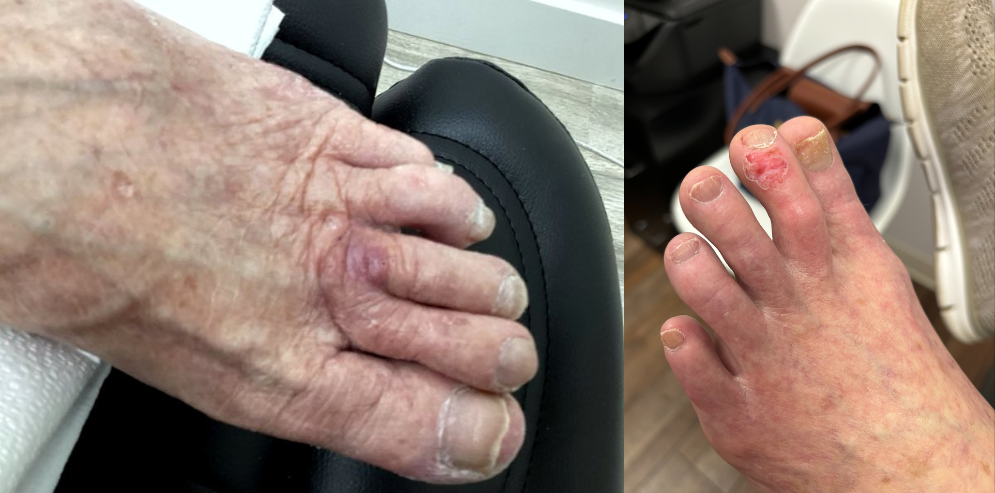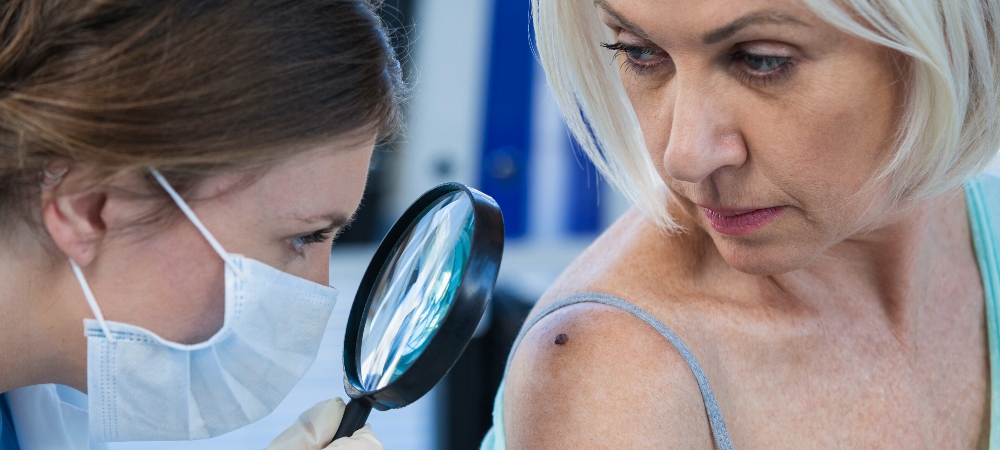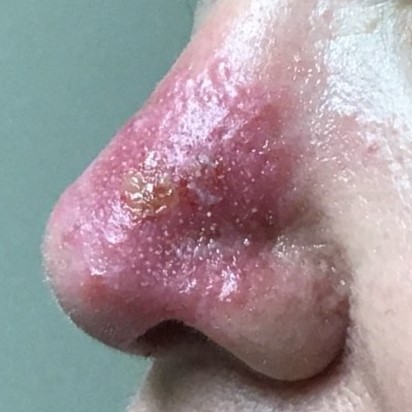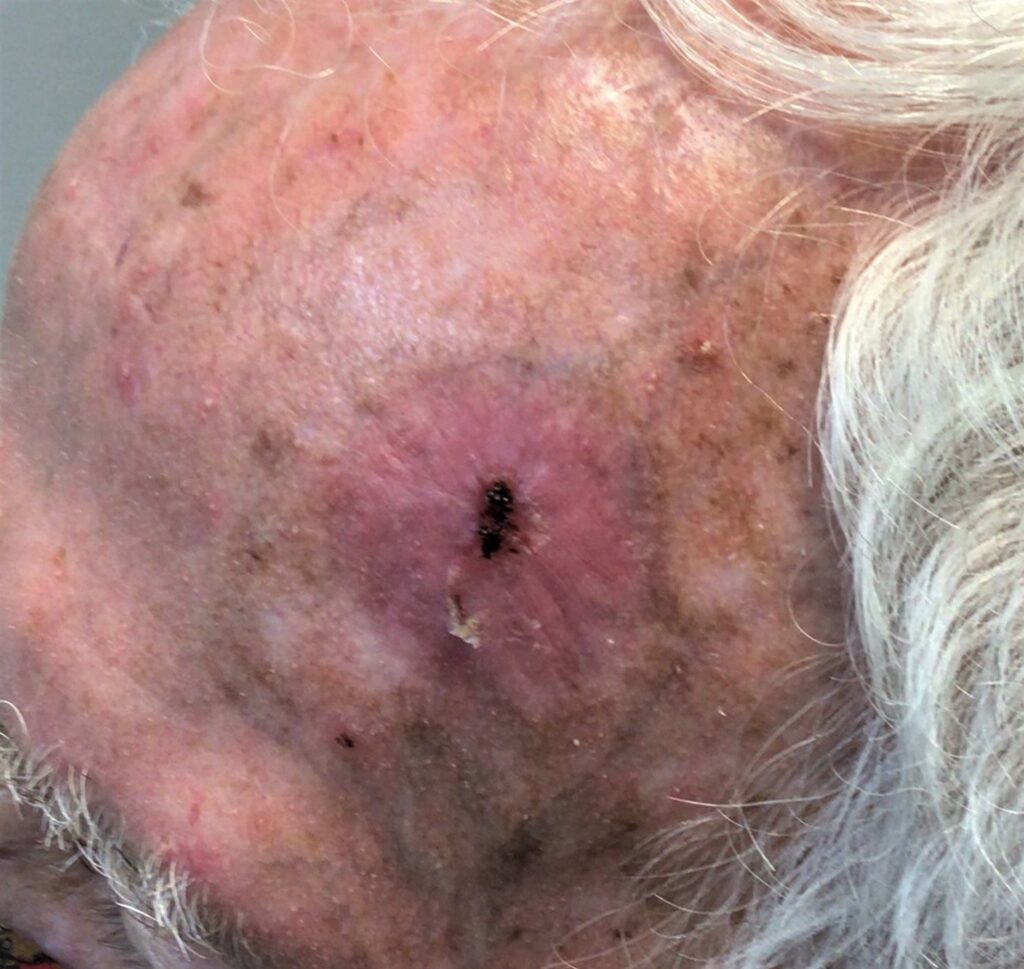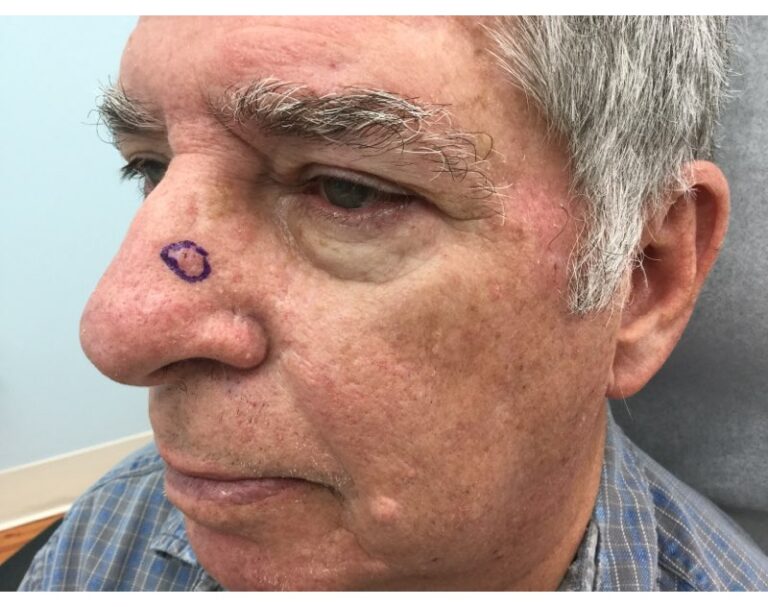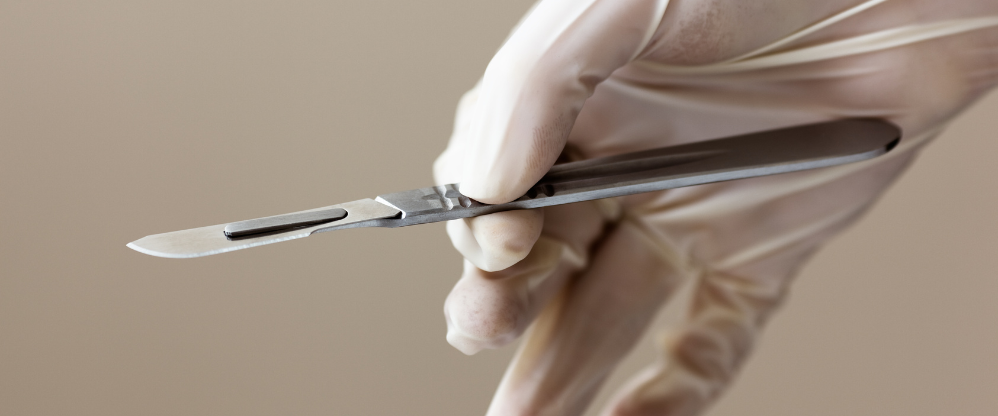
Mohs surgery, sometimes called Mohs micrographic surgery, is a surgical technique used to treat common and uncommon forms of skin cancer. Mohs surgery is performed in stages, with the cancer-containing skin being removed in thin layers until no more skin cancer remains, leaving behind as much healthy tissue as possible. We’ll talk more about what to expect from Mohs surgery below, as well as discuss a surgery-free treatment alternative called Image-Guided SRT.
What to Expect During Mohs Surgery
If you elect to undergo Mohs surgery to treat skin cancer, it can typically be done on an outpatient basis in a medical office. A local anesthetic is administered to numb the affected area before surgery, and the person receiving treatment remains awake throughout the process.
Using a scalpel, the Mohs surgeon will first remove the visible skin cancer, as well as a thin layer of the surrounding skin. He or she will then leave the room to examine the skin that was removed under a microscope, looking for cancer cells. If cancer cells are found, the surgeon will remove another thin layer of skin, then will once again view it under a microscope to check for cancer cells. This process is repeated until no more cancer cells remain.
Depending on the size of the wound left from Mohs surgery, the person may be required to have stitches.
Other Facts to Know About Mohs Surgery
Often, people who have been diagnosed with skin cancer are recommended to have Mohs surgery without being given a full explanation of how the recovery might impact their life. Here are some factors to consider that your medical provider may not have discussed with you:
- Mohs surgery may leave a scar
- Although a local anesthetic is administered, some people may still feel some pain
- You may be required to stop the usage of blood thinners
- You may be required to take an antibiotic after surgery
Are There Alternatives to Mohs Surgery?
For deadly types of skin cancer like melanoma, Mohs surgery is often the most effective treatment. However, other, more common forms of skin cancer—including basal cell skin cancer and squamous cell skin cancer—may be treated through methods other than Mohs surgery.
If you are seeking a surgery-free treatment alternative for common forms of skin cancer, consider Image-Guided SRT (utilized by GentleCure™). This technology uses extreme precision to deliver a measured dose of low energy just below the skin’s surface, destroying the cancerous cells with no cutting required, and with little to no side effects.
There are several benefits of treating common forms of skin cancer with Image-Guided SRT:
- Treatment is short and painless (some people may feel mild irritation)
- No wound or surgical scarring (hypopigmentation may occur)
- No cutting
- No antibiotics required
- No stoppage of blood thinners
- More than one skin cancer area can be treated at a time
- No changes to your daily routine are required
Call GentleCure to Learn More About Image-Guided SRT
If you would like to learn more about how Image-Guided SRT works and what to expect during an appointment, call GentleCure at 855-936-4411 to speak with a skin cancer information specialist. We can help you make an informed treatment decision.
